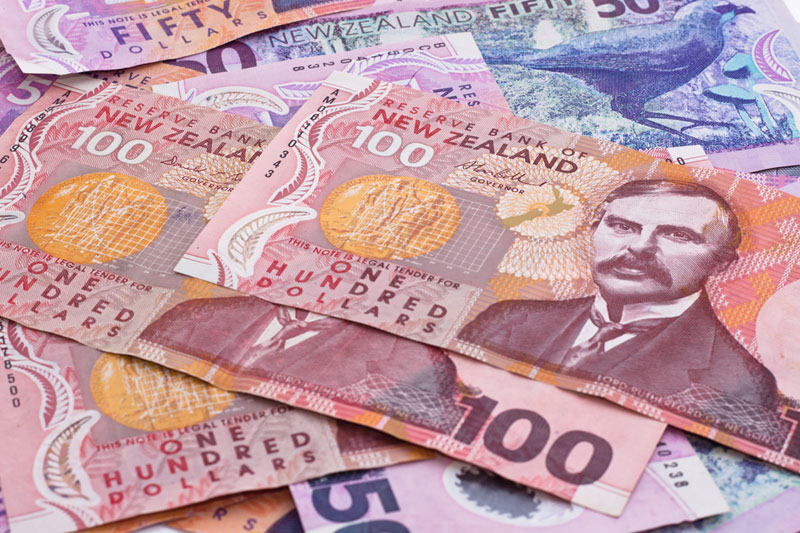Investing.com - The kiwi held weaker in Asia on Wednesday after a wider than expected current account deficit with investors increasingly focused on central bank board meetings next week in the U.S. and Japan.
The New Zealand second quarter current account came in at a deficit of NZ$945 million quarter-on-quarter, compared to NZ$410 million seen, and a NZ$7.38 billion gap year-on-year compared to NZ$6.74 billion expected, hitting 2.90% of GDP against 2.70% seen. The deficit was wider than expected due mainly to fall in services surplus with New Zealanders traveling overseas spending a record NZ$1.4 billion.
NZD/USD traded at 0.7248, down 0.06% and barely moved after the data. AUD/USD traded at 0.7473, up 0.11%, while USD/JPY changed hands at 102.79, down 0.21%.
In Australia, the Westpac consumer sentiment index for September rose 0.3%, well below the 1.0% rise seen.
In Japan, speculation on further Bank of Japan easing was stoked on Wednesday by an article in the Nikkei business daily that said the central bank may widen its negative interest rate policy as an asset buying target, which includes government debt, of ¥80 trillion reaches saturation point.
The U.S. dollar index, which measures the greenback’s strength against a trade-weighted basket of six major currencies, rose 0.03% to 95.57.
Overnight, the dollar held onto gains against the other major currencies in subdued trade on Tuesday, as the greenback recovered from comments by a Federal Reserve official on Monday sparking fresh uncertainty over the timing of future U.S. rate hikes.
The dollar initially came under pressure after Fed Governor Lael Brainard warned against raising interest rates too quickly. Markets are pricing in a 15% chance of a rate hike at the Fed's September 20-21 meeting, according to Investing.com's Fed Rate Monitor Tool.
In a speech on Monday, Brainard said economic progress continues in the U.S., but the Fed would be wise to continue keeping policy loose.
The comments came after Boston Fed President Eric Rosengren said on Friday that low interest rates are increasing the chance of overheating the U.S. economy.
